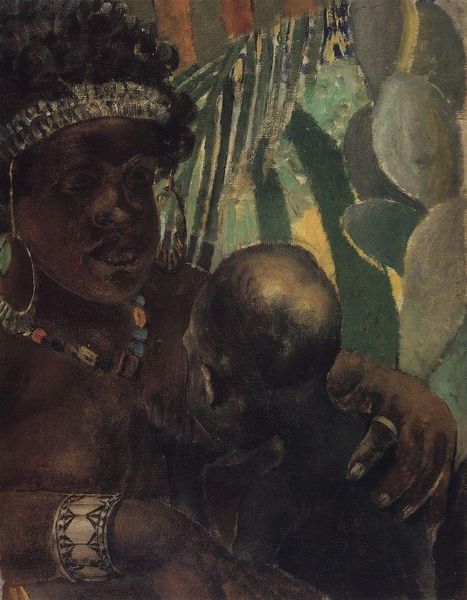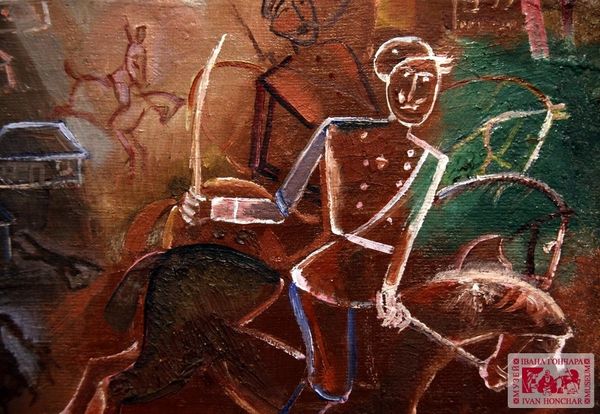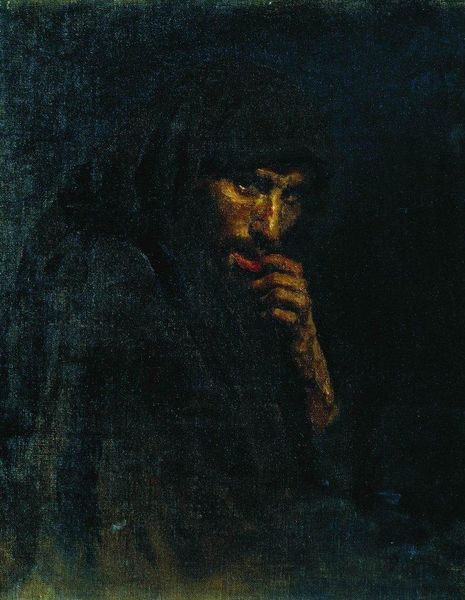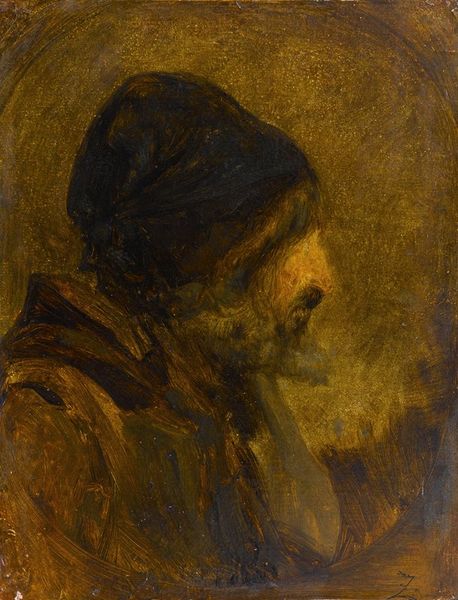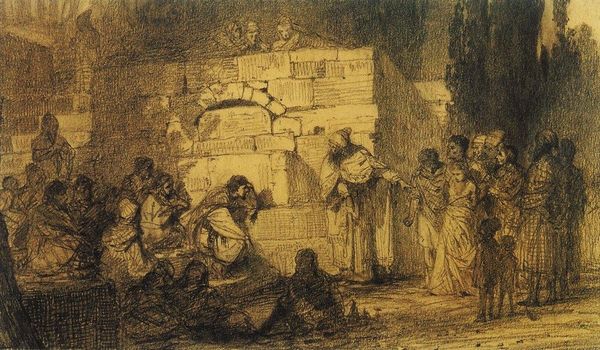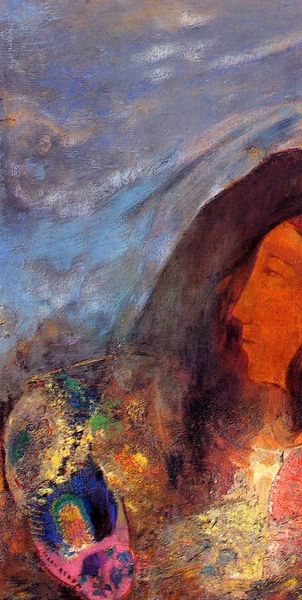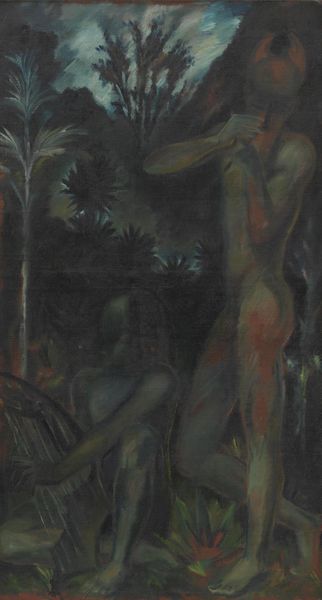
Copyright: Public domain
Curator: Here we have Vasily Vereshchagin's "Coolie (porter)", painted in 1875. I see it as a remarkably evocative piece, wouldn’t you agree? Editor: The immediate impression is one of weariness, the subdued color palette emphasizing the harsh reality of manual labor. The subject seems both burdened and resilient. Curator: Absolutely. Vereshchagin was renowned for his unflinching portrayals of the human condition, often amidst conflict and hardship. His meticulous use of oil paints creates a remarkable texture in the backdrop—almost resembling worn-out walls or the rough surface of a stone building. You sense the passage of time and unrelenting environment. Editor: And this makes you wonder about labor's brutal simplicity. Here the visible brushstrokes detailing skin contrast beautifully against the cold tones and peeled texture in the background; the bare feet and rudimentary garments, speak volumes about the porter’s material conditions. It all indicates both the human touch of artmaking and of labor. Curator: True, and perhaps we can sense his Romanticism sensibilities as well; Vereshchagin isn’t simply documenting; he is revealing. I can see the sitter almost as a symbolic representation of the invisible workforce of colonized regions. The work evokes both a sense of intimate connection with and an appreciation for a culture removed from the centers of European power. Editor: You’re right—that stark juxtaposition—his romantic yearning versus labor conditions—is truly the painting's emotional engine. Yet there's no idealization here, only plain depiction. Curator: Indeed! It serves as a historical document, a reflection on colonial labor practices and perhaps also on the human spirit’s endurance. It definitely invites introspection about past social frameworks. Editor: Yes! And a good example of where visual art transcends mere portraiture, morphing into commentary about broader social mechanics. Curator: Well, pondering all this certainly adds another depth of perspective to Vereshchagin's work, doesn’t it? Editor: Absolutely, it makes you think twice about how material shapes art, and conversely, how the artists shape our views regarding exploitation and the need for historical reflection.
Comments
No comments
Be the first to comment and join the conversation on the ultimate creative platform.
